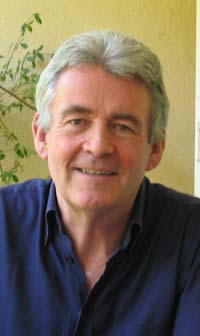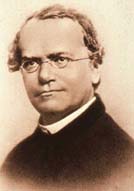
|
Science in Literature(This essay first appeared in Nature, March 2005)
When people discover that I have been, for much of my working life, a teacher, they evince little surprise. A teacher of literature, they assume. It’s when I confess that I am a biology teacher that they are taken aback. A novelist who is a biologist is surely a contradiction in terms. Scientists are logic and facts; writers are imagination and fantasy; and between these opposite poles lies a profound gulf. Even today it is considered unusual for someone to cross the divide. Whether such an expectation originated with C. P. Snow’s famous 1959 Rede lecture The Two Cultures and the Scientific Revolution I am not sure, but certainly his phrase has lodged in the collective mind almost as insistently as his other coining, the “corridors of power”. Richard Dawkins would, one imagines, pronounce “The Two Cultures” a successful meme. As a teenager with literary ambitions but studying biology, this divide worried me. I couldn’t see why a scientist should not have recourse to wit and imagination, or a writer to careful logic and reason. The fact that Snow himself was a physicist gave me little comfort — his writing seemed exactly what one might expect from the science side of his own perceived gulf: all facts and little fantasy. But elsewhere there were stirrings of hope, flutterings of possibility. As an undergraduate I heard the Nobel laureate Niko Tinbergen start a lecture course on animal behaviour with the words, “Some people try to extrapolate from our studies to human behaviour but if you wish to learn about the behaviour of man don’t ask the ethologist; turn rather to the great writers. Read Dostoevsky, read Tolstoy.” I paraphrase, but the sense is right. In the event it was another Russian who caught my imagination and my feeling for nature. I was studying entomology at the time, learning about the genetics of mimicry in Papilio dardanus, the African swallowtail, and somehow I came across this:
The author of these words (will a scientist, reading this, already have turned to the references to check?) was a research fellow at the Museum of Comparative Zoology at Harvard University. He also worked for the American Museum of Natural History and Cornell University Museum of Entomology. As a taxonomist he named more than 20 genera, species and subspecies within the Lepidoptera and published 22 scientific papers. And yet his literary prose, dancing and dazzling and deceiving much like one of his beloved butterflies, gave birth to some of the greatest novels of the twentieth century. I refer, of course, to that most remarkable of writers in the English (and, presumably, the Russian) language, Vladimir Nabokov. The assiduous checker of references may spot that I have carefully excised from the quotation above Nabokov’s denunciation of Darwinian selection. His anti-Darwinian views (only slightly less notorious than his anti-Freudian ones) were, I suspect, more of a protest than a postulate. He was a quantum physicist of the literary world (“I confess, I do not believe in time,” he wrote) and was surely reacting against the pedestrian nature of natural selection; for there is something pedestrian about Darwin’s theory. Where, after all, is the thrill in the argument with which the evolutionist greets the sceptic who doubts that you and I could have evolved by an incremental process of favoured mistakes from, say, sea squirts? “Give it enough time,” he insists: “just a few hundred million years.” Well, yes, I agree, but wearily. There’s not much fun in deserts of vast eternity, is there? Nabokov understood, and perhaps this is what drew him to literature, exactly what many a scientist has grasped — that imagination can circumvent both dull experiment and dull exposition, and deliver ideas in a flash. For this reason — the supremacy of imagination — there has always been a cross-fertilisation between science and literature. You may find it in the borrowing of ‘quark’ from Finnegans Wake (“Three quarks for Muster Mark”), or in the research interest of a major character in a famous 1960s novel:
It is there in the image of Schrödinger’s cat — a purely literary conceit — stalking through the modern imagination with a smile that suggests it alone knows whether it is alive or dead. It lies in the pulse of fear that runs through one of Ian McEwan’s characters when he hears the creak of a floorboard behind him:
Yet, perhaps it is only recently that some writers have made the scientific process the very focus of their work. This is what Carl Djerassi, author of several plays and novels as well as the oral contraceptive pill, would call ‘science-in-fiction’, to distinguish it from that tired and often tiresome genre ‘sci-fi’. It is important not to be misled by the use of the word fiction here. Fiction does not stand as the antithesis to fact. Good fiction points towards truth, which is, after all, only where the scientist is trying to go. Thus Niels Bohr opens his front door to discover that Werner Heisenberg “stands on the doorstep blinking in the sudden flood of light from the house. Until this instant his thoughts have been everywhere and nowhere, like unobserved particles, through all the slits in the diffraction grating simultaneously. Now they have to be observed and specified”(4). And from this famous 1941 visit of one nuclear physicist to another, Michael Frayn goes on to explore the dilemmas of discovery in his play Copenhagen. I attempted something similar in my own novel Mendel’s Dwarf, trying, like Frayn, to get to grips with the moral and ethical issues that we face today:
Later Benedict sits at his microscope examining the embryos that he has fathered using Jean’s eggs:
How indeed? If the proper study of mankind is man, then we are bound to treat such issues through the medium of literature. But there is a great deal more to science than mere ethics: there is the whole of that imaginative construct that is the scientific vision of nature. From a textbook you get the familiar dusty story about Gregor Mendel and his peas, as though it was all a matter of logic and reason. Yet his work was one of the greatest achievements of the human intellect and imagination. It was a lifework and an obsession, a proposal that began to tease apart the very fabric of nature just as Bohr and others pulled apart the fabric of matter. Such things deserve our attention:
Perhaps through the medium of this passage the reader might live, for a few moments, some of those sixteen years of obsession. Perhaps he might see the short, dumpy man walking in the monastery garden and thinking over his garden peas and what they might mean. This is not to miss the point of the science: it is the point. Because, just as an artistic creation lives in the mind of its creator, so too does a scientific idea. We labour under the illusion that discoveries and ideas lie somewhere out there in nature — but in truth the science is in the discoverer’s head. The inherited anlage was in Mendel’s mind, the uncertain particle was in Heisenberg’s, the universe is in Stephen Hawking’s. That is what makes them so remarkable. There is little difference between this and artistic vision. Yes, you’ve got to do the experiments but that is not the essence of it. The essence is the idea and the enquiry. “What if ?” is the question posed in both literature and science. What if the Thane of Cawdor were to have an ambitious wife and a fatal flaw in his disposition? What if a young Raskolnikov were to attempt the ultimate intellectual violence, the justification of murder? What if a grown man were to fall in love with a pubescent girl? Or... what if a gravitational field were to create a curvature of the space–time continuum? What if electrons were to be both wave and particle? What if God really were to play dice? Darwin has brought us out of heaven and down to earth and surely it is no surprise that uncertainty — “that final core of uncertainty at the heart of things”(7) — permeates modern literature and modern science alike. The unreliable particle and the unreliable narrator are two sides of the same weirdly spinning coin. And just as scientists employ thought experiments to focus their ideas, so a work of literature is a thought experiment about this uncertain human condition.
|
